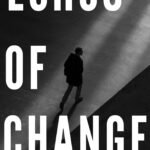In recent weeks, the UK and Ireland have experienced rising tensions regarding immigration, particularly illegal immigration. This phenomenon has sparked various reactions from native populations, including increasing concerns among the working class about potential threats to their values, lifestyle, and standard of living. The discourse around these issues is multifaceted and complex, involving economic, cultural, and social dimensions, and is further inflamed by the controversial Great Replacement theory.
Economic Concerns
One of the primary reasons for the growing concern among UK and Irish natives is the perceived economic impact of illegal immigration. The working class, in particular, feels the brunt of these changes due to several factors:
- Job Competition: There is a widespread belief that illegal immigrants compete with native workers for low-skilled jobs, driving down wages and making it harder for locals to find employment. This concern is exacerbated during times of economic downturns or high unemployment rates, where the influx of additional workers can strain the job market further.
- Public Services: Another major concern is the strain on public services, such as healthcare, education, and housing. With more people needing these services, there is a fear that the quality and availability for native residents will diminish. This is particularly poignant in regions where public services are already stretched thin and housing is already short, in addition the indigenous population are seeing the mostly young male immigrants being hosted in local hotels which is creating a widely held belief that they are getting preferential treatment over the local population.
- Welfare System: The welfare system in both the UK and Ireland is often cited as being under pressure from increased demands. There is a narrative (correctly held) that illegal immigrants exploit these systems, taking resources away from those who have contributed to them through taxes and have legitimate claims.
Cultural and Social Concerns
Beyond economic issues, there are significant cultural and social concerns associated with illegal immigration. These concerns often revolve around the perceived incompatibility of certain immigrant groups with the host country’s values and way of life.
- Cultural Identity: The UK and Ireland have rich cultural heritages that many natives are proud of and wish to preserve. There is a fear that large-scale immigration, particularly from regions with vastly different cultures, will dilute or overshadow these traditions. This fear is often heightened when the immigrant groups are visibly distinct in terms of religion, language, and customs.
- Integration Challenges: The challenge of integrating immigrants into society is another critical issue. Some argue that certain groups, particularly those from Islamic countries, have values and lifestyles that are fundamentally different from those in predominantly Christian societies like the UK and Ireland. This perceived incompatibility can lead to social friction, as well as concerns about the erosion of societal norms and values.
- Community Cohesion: Community cohesion is seen as being under threat due to the presence of large numbers of illegal immigrants. There are concerns about increased crime rates, radicalization, and the creation of parallel societies where immigrants do not fully integrate but instead maintain their separate cultural practices and social structures.
- Cultural concerns: Concerns about illegal immigration in the UK and Ireland are often heightened by the perception that many of these migrants bring societal values that starkly differ from those of the host countries. A significant area of worry revolves around the use of knives and attitudes towards women, particularly underage girls. Incidents involving knife crime among certain immigrant communities have fuelled fears of rising violence and instability. Additionally, cultural practices that may not align with Western norms, such as differing views on women’s rights and the treatment of young girls, contribute to the anxiety. These concerns are compounded by reports and anecdotes suggesting that some immigrants come from backgrounds where women’s rights are not as rigorously protected, leading to apprehensions about the safety and well-being of women and girls within these communities. Such perceptions, whether rooted in fact or amplified by media and political discourse, play a significant role in shaping the native population’s attitudes towards illegal immigration.
The Great Replacement Theory
The Great Replacement theory, a controversial and widely criticized idea, posits that native populations in Western countries are being systematically replaced by non-European immigrants. This theory has been used to justify anti-immigrant sentiment and has found traction among certain segments of the population in the UK and Ireland.
- Demographic Shifts: Proponents of the Great Replacement theory argue that high levels of immigration will lead to significant demographic changes, ultimately resulting in native populations becoming minorities in their own countries. This fear is often linked to concerns about losing cultural and national identity.
- Cultural Erasure: The theory suggests that the influx of immigrants, particularly those from non-Western and Islamic countries, will lead to the erasure of traditional Western values and cultural practices. This concern is amplified by the perception that these immigrants are not assimilating but rather maintaining their distinct cultural identities.
- Political Manipulation: Some adherents of the theory believe that political elites are deliberately encouraging mass immigration to dilute the voting power of native populations and implement multicultural policies. This belief fosters a sense of distrust in the government and fuels anti-immigrant rhetoric.
Media and Political Influence
The role of the media and political rhetoric cannot be ignored in the rise of anti-immigrant sentiment. Both in the UK and Ireland, the media often highlight stories that emphasize the negative aspects of immigration, which can skew public perception.
- Sensationalism: Media outlets sometimes resort to sensationalism, focusing on crimes committed by immigrants or exaggerated claims about their impact on society. This can lead to a heightened sense of fear and urgency among the native population.
- Political Rhetoric: Politicians, particularly those on the right, may use immigration as a tool to rally support. By framing immigration as a threat to national security, economic stability, and cultural identity, they can galvanize voters who are concerned about these issues.
Counter Narrative on the Role of Media in Reporting Immigration-Related Crimes
Critics of mainstream media (MSM) in the UK and Ireland argue that these outlets often obscure the full extent of crimes committed by illegal immigrants, creating a disconnect between public perception and reality. They contend that media organizations frequently downplay or omit the immigration status of perpetrators in reports of violent incidents, particularly those involving knife crime and assaults on women and underage girls. This alleged lack of transparency fuels public mistrust and a sense that the media is deliberately shielding the truth to promote a particular narrative or avoid accusations of racism and xenophobia.
High-profile cases have intensified these criticisms. For example, in several instances where serious crimes were committed, critics claim that the media refrained from disclosing the perpetrators’ illegal immigrant status, leaving communities to rely on unofficial sources for this information. This perceived media bias is seen as contributing to a broader issue of underreporting and misrepresenting the negative aspects of illegal immigration.
Proponents of this counter-narrative argue that by failing to fully disclose these details, the MSM not only undermines public trust but also hampers informed public debate on immigration policy. They assert that a more transparent approach would allow for a more honest discussion about the challenges and risks associated with illegal immigration, ultimately leading to more effective and fair policy solutions. This call for greater transparency and accountability from the media reflects a broader demand for balanced and comprehensive reporting that accurately reflects the complexities of immigration issues.
The Role of Islamophobia
A significant portion of the concern regarding illegal immigration revolves around the influx of immigrants from Islamic countries. This concern is often intertwined with Islamophobia, which can exacerbate tensions and contribute to a hostile environment for immigrants.
- Fear of Terrorism: The association of Islam with terrorism, fueled by global events and media portrayal, has led to heightened fears of terrorist attacks. This fear is often generalized to all Muslim immigrants, regardless of their individual backgrounds or intentions.
- Cultural Stereotypes: Negative stereotypes about Muslims, including beliefs about their attitudes towards women, democracy, and freedom of speech, contribute to the perception that they cannot integrate into Western societies. These stereotypes are often unfounded but can have a powerful influence on public opinion.
- Religious Conflict: The historical and ongoing conflicts between the Christian West and the Islamic world further complicate the situation. This history can lead to mistrust and fear, making it more difficult for Muslim immigrants to be accepted and integrated.
The Working Class Perspective
The working class, in particular, feels vulnerable to the changes brought about by illegal immigration. Several factors contribute to their heightened concern:
- Economic Marginalization: The working class often feels economically marginalized and left behind by globalization and technological advances. Illegal immigration can be seen as another threat to their economic security, exacerbating existing anxieties.
- Social Services: As primary users of public services, the working class is acutely aware of any perceived decline in the quality and availability of these services. They are more likely to experience the immediate impacts of increased demand and competition for resources.
- Cultural Attachment: The working class may have a stronger attachment to local cultural norms and traditions. They might perceive immigration as a threat to these norms, fearing the loss of a way of life that has been passed down through generations.
Conclusion
The rise in anti-immigrant sentiment in the UK and Ireland is a complex issue with deep economic, cultural, and social roots. While concerns about job competition, public services, and cultural integration are legitimate, they are often exacerbated by media sensationalism, political rhetoric, and underlying prejudices such as Islamophobia and the controversial Great Replacement theory. The working class, in particular, feels these impacts more acutely, leading to a sense of vulnerability and opposition to illegal immigration. On an equal argument, many of the concerns are valid and the current open door policy must be stopped by imposing strict measures to ensure the health services are not further burdened and the housing crisis doesn’t deepen even further.
Addressing these concerns requires a nuanced approach that balances the legitimate needs and fears of native populations with the humanitarian imperative to support and integrate immigrants. Policies that ensure fair access to jobs, protect public services, and promote cultural understanding and integration are essential in fostering a more inclusive and cohesive society. Efforts should also be made to counteract the spread of divisive theories and rhetoric, focusing instead on building a future where all members of society can thrive together.


